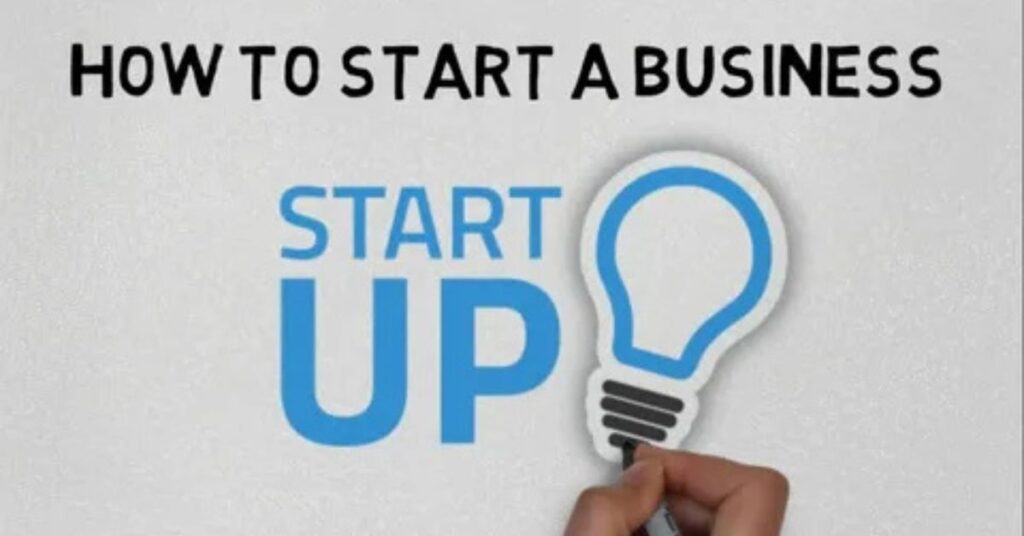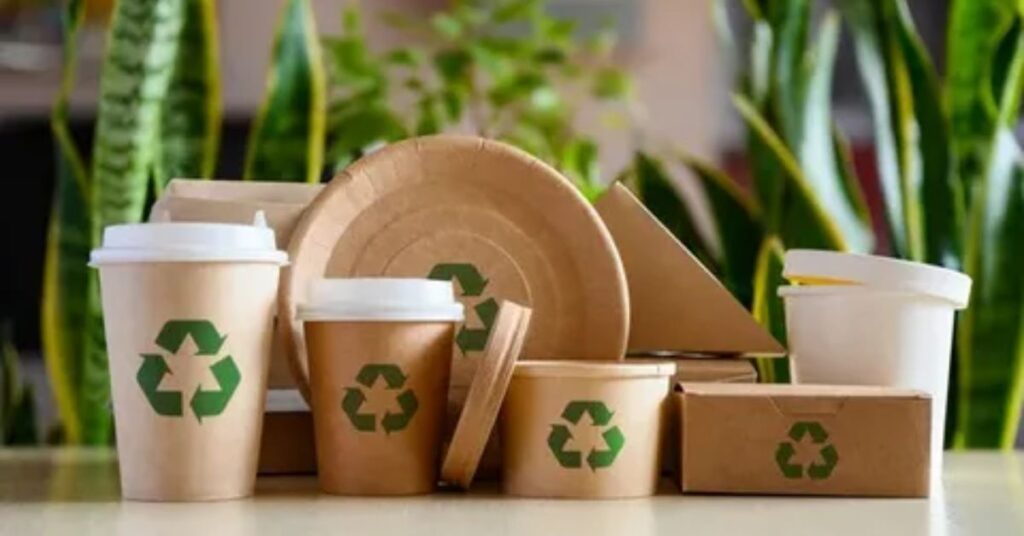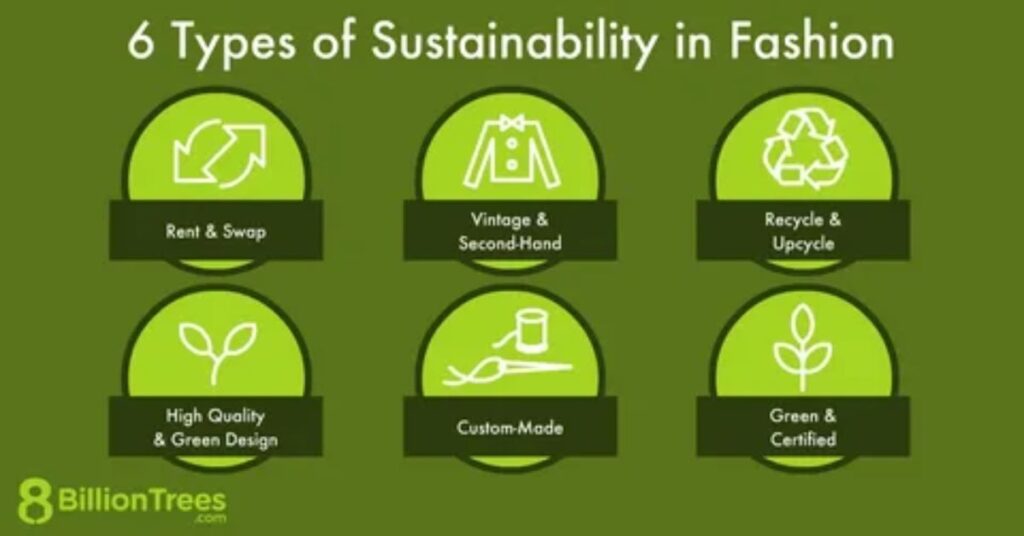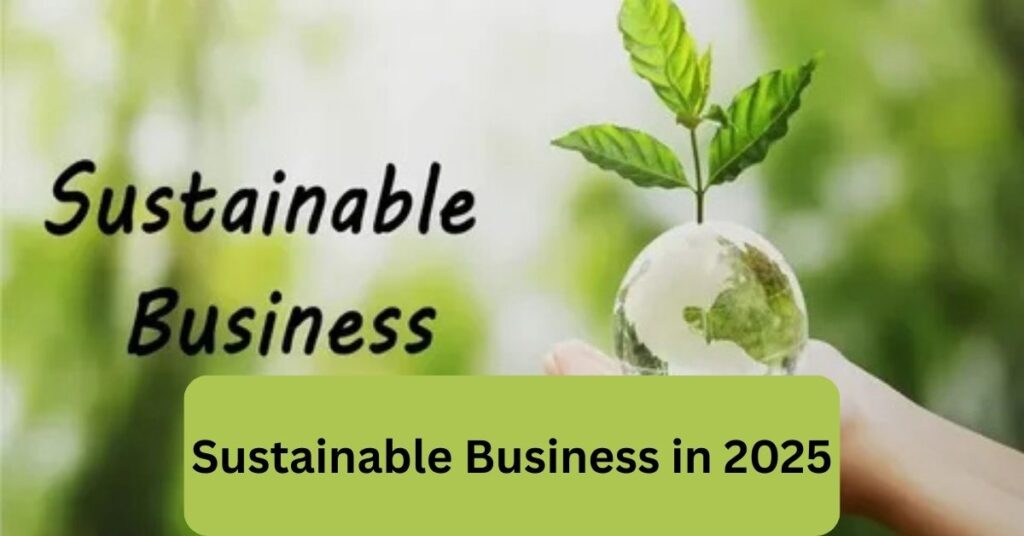In today’s world, starting a business is not just about making money. It is also about making a positive impact on the planet. More and more customers want to buy from companies that care about the environment. This is where the idea of a sustainable business comes in.
If you are thinking about starting your own company, learning how to start a sustainable business in 2025 will help you stand out, build trust, and succeed in the long run. This guide will show you step-by-step how to do it, even if you are a beginner.
- What Is a Sustainable Business?
- Why Start a Sustainable Business in 2025?
- Step-by-Step Guide: How to Start a Successful Sustainable Business in 2025
- Benefits of Starting a Sustainable Business
- Global Opportunities in Sustainable Business
- Future of Sustainable Business in 2025 and Beyond
- Conclusion
- FAQ's
What Is a Sustainable Business?
A sustainable business is a company that makes a profit while also protecting the planet and people. Instead of focusing only on short-term gains, it aims to create long-term positive change for society and the environment.
Such businesses balance economic growth, social responsibility, and environmental protection to ensure a better future for all. It focuses on:
- Saving energy and resources
By using renewable energy sources, optimizing production, and reducing water and electricity usage, sustainable companies lower their environmental footprint and operational costs. - Reducing waste and pollution
Businesses adopt recycling programs, green manufacturing, and zero-waste packaging to minimize pollution and contribute to a cleaner planet. - Using eco-friendly products
From biodegradable materials to organic ingredients, they choose sustainable alternatives that protect ecosystems and reduce toxic emissions. - Supporting local communities
A sustainable business often partners with local suppliers, ensures fair wages, and invests in community development programs to drive inclusive growth. - Thinking long-term, not just short-term profits
Such companies prioritize ethical business practices, climate action, and innovation that guarantee both financial success and environmental preservation for future generations.
For example, a clothing brand that uses organic cotton, or a coffee shop that uses biodegradable cups, is following sustainable practices.
Learn more about sustainable business basics from the United Nations Sustainable Development Goals (SDGs).
Why Start a Sustainable Business in 2025?
Here are five strong reasons why starting a sustainable business now is a smart choice:
- Customers demand it
People prefer eco-friendly brands that show real commitment to sustainability. Modern consumers actively look for green businesses that reflect their values and help reduce their carbon footprint.
When your brand embraces sustainable practices, it not only attracts loyal customers but also earns positive reviews and word-of-mouth referrals. - Saves money
Lower energy bills and waste management costs are just the start. By investing in renewable energy and recycling systems, companies cut operational expenses over time.
Businesses that adopt sustainable production methods often enjoy higher efficiency, longer equipment life, and less material waste, all contributing to steady long-term savings. - Government support
Many countries give tax benefits and green grants to companies that follow eco-friendly standards. From low-interest green business loans to renewable energy incentives, governments encourage sustainability at every level.
Taking advantage of these programs not only reduces startup costs but also enhances your reputation as a socially responsible business. - Stronger brand image
Being eco-friendly makes people trust your brand and connect with it emotionally. Customers love to support sustainable companies that take action for the planet instead of just talking about it.
A strong green brand identity helps you stand out in crowded markets and makes your business more appealing to investors and media alike. - Future-proofing
You stay ahead of laws and market changes by integrating sustainability early. As more regulations favor environmentally responsible businesses, your company will already be compliant and adaptable.
By preparing for future green economy trends, you protect your brand from risk while positioning it for long-term growth and innovation.
According to Forbes, companies that use sustainable strategies grow faster than those that do not.
Step-by-Step Guide: How to Start a Successful Sustainable Business in 2025

Now let’s go through the steps one by one.
1. Find Your Sustainable Business Idea
The first step is choosing what kind of business you want. Look for ideas that are both profitable and eco-friendly.
Some examples of sustainable businesses include:
- Eco-friendly packaging company
Start a sustainable packaging business that replaces plastic with biodegradable and compostable materials. These eco-solutions help brands reduce their carbon footprint and attract green-conscious consumers. - Organic food products
Start a sustainable packaging business that replaces plastic with biodegradable and compostable materials. These eco-solutions help brands reduce their carbon footprint and attract green-conscious consumers. - Second-hand fashion store
Launch a second-hand or thrift fashion store that encourages people to reuse and recycle clothing instead of buying fast fashion. This sustainable fashion model saves resources while promoting eco-conscious shopping habits. - Solar panel installation service
Offer solar energy solutions to homes and small businesses looking to lower their electricity costs and carbon emissions. This renewable energy business provides long-term savings and supports the shift toward clean energy. - Natural skincare products
Create a line of natural skincare products made from plant-based ingredients and eco-friendly packaging. Customers today value brands that care for both skin health and the environment. - Green cleaning services
Start green cleaning services using non-toxic and biodegradable cleaning agents. This eco-friendly service business helps clients maintain clean spaces while protecting their health and the planet.
For more inspiration, check GreenBiz.
2. Research the Market and Competitors
Before you start, check:
- Understand the customer behavior and local demand trends before launching your business. Conduct short surveys or use Google Trends to discover what eco-friendly products people are actively searching for in 2025.
- Analyze your sustainable business competitors and identify their strengths and weaknesses. This helps you find creative ways to make your green business idea stand out in the local market.
- Look for an unmet need or sustainability gap that existing businesses are missing. Filling this gap with an innovative eco-friendly solution can give your startup a strong advantage from day one.
Example: If you are in the UK, people are looking for plastic-free packaging. If you are in the USA, many want organic and healthy foods.
Use free tools like Google Trends or AnswerThePublic to see what people search for.
3. Build a Strong Business Plan
Your business plan should include:
- Vision and mission
Your vision and mission define the purpose and direction of your sustainable business. A clear mission helps attract eco-conscious customers who believe in your values and long-term impact on the environment. - Budget and expected costs
Plan your budget and expected costs carefully to avoid financial risks. Include expenses like eco-friendly materials, certifications, marketing, and operations to ensure your green business model stays profitable and scalable. - Marketing strategy
Create a marketing strategy that promotes your sustainable brand values effectively. Focus on green marketing campaigns, social media storytelling, and collaborations with eco-influencers to reach environmentally aware audiences. - Long-term goals for sustainability
Set long-term goals for sustainability to guide your company’s growth. Aim to reduce your carbon footprint, adopt renewable energy, and contribute to global sustainable development goals (SDGs) to stay competitive in 2025 and beyond.
Many green startups succeed faster by adopting effective B2B collaboration methods with suppliers and distributors.
Personal Experience
When I started my first eco-friendly blog, I realized how passionate people are about living sustainably and supporting green businesses. Sharing simple tips on reducing waste, using renewable products, and building an eco-friendly lifestyle not only inspired others but also helped me connect with a global audience. That experience taught me that even small actions can create a powerful ripple effect toward a more sustainable future.
4. Choose Eco-Friendly Materials and Suppliers

This step is very important. Always pick sustainable suppliers.
For example:
- FSC-certified wood
Choosing FSC-certified wood ensures your furniture comes from responsibly managed forests, protecting biodiversity and reducing deforestation. It also shows customers your brand supports sustainable sourcing and eco-friendly production. - Organic cotton
Using organic cotton helps cut down harmful pesticide use and supports sustainable farming practices that protect soil health. It also appeals to eco-conscious consumers who prefer environmentally friendly fashion over fast fashion. - Fair trade practices
Partnering with fair trade suppliers guarantees ethical labor conditions and supports community-based sustainability. It builds a trustworthy brand image and aligns your company with global ethical business standards.
You can find certified suppliers through Fair Trade International.
5. Register Your Business and Check Green Certifications
Once you are ready, register your business legally in your country. At the same time, apply for green certifications that make your company more trusted.
Some examples:
- B Corp Certification recognizes companies that meet the highest standards of social and environmental performance, transparency, and accountability.
It helps your brand stand out as a sustainable business that genuinely balances profit and purpose, building long-term trust with eco-conscious customers. - LEED Certification for eco-friendly buildings is a globally recognized standard developed by the U.S. Green Building Council (USGBC) to promote energy-efficient and environmentally responsible construction.
Having a LEED-certified workspace not only reduces carbon emissions but also improves employee productivity and enhances your green business reputation. - ISO 14001 for environmental management sets the framework for companies to create effective environmental management systems (EMS) that minimize waste and pollution.
It’s one of the most respected sustainability certifications, helping businesses improve efficiency, comply with global standards, and boost eco-friendly brand credibility.
Customers trust certified businesses more than unverified ones.
6. Focus on Energy and Waste Management
A big part of being sustainable is reducing energy and waste.
- Renewable energy
Switching to renewable energy sources like solar panels or wind turbines not only lowers electricity bills but also reduces your carbon footprint and strengthens your sustainable business model. - LED lights
Replacing traditional bulbs with energy-efficient LED lighting helps you cut down power consumption and create a greener workplace environment that supports long-term sustainability goals. - Recycling
Start a proper recycling program for all packaging materials and returned items to promote waste reduction and encourage eco-friendly practices across your entire supply chain. - Digital tools
Using digital solutions such as cloud storage, e-invoicing, and project management apps can minimize paper waste while improving business efficiency and environmental responsibility.
Learn about energy efficiency from Energy Star.
7. Build Your Online Presence
In 2025, every sustainable business needs a strong online presence to connect with eco-conscious customers and showcase its green values. Create:
- A website with eco-friendly hosting (example: GreenGeeks) that runs on renewable energy and reduces your brand’s carbon footprint; this shows customers you truly care about sustainability.
- Social media accounts to share your eco-journey, post behind-the-scenes content, and build a community that supports your green business goals. Engaging visuals and storytelling increase customer trust and awareness.
- Blogs about sustainable business practices to attract organic traffic and educate readers about eco-friendly solutions. Regular blogging helps your site rank higher on Google and builds your authority as a sustainability-focused entrepreneur.
To promote your eco-friendly brand, learn how to build an effective social media strategy for small businesses in 2025.
8. Attract Customers with Green Marketing

To succeed, you must show people why your brand is eco-friendly and unique. This is called green marketing.
Tips:
- Use eco-labels
Eco-labels instantly show that your brand cares about the environment. Adding certified eco-labels like Fair Trade, Energy Star, or Organic Certified builds consumer trust and improves your brand credibility in the sustainable market. - Share your sustainability goals
Tell customers what your eco-friendly business goals are and how you plan to achieve them. Sharing measurable green initiatives in your campaigns helps create brand transparency and encourages long-term customer loyalty. - Offer discounts
Encourage recycling and waste reduction by rewarding customers for bringing back or reusing your items. This simple green marketing strategy not only boosts engagement but also strengthens your sustainable brand image. - Run eco-friendly challenges on social media
Launch fun online campaigns that motivate followers to take small sustainability actions like reducing plastic or planting trees. These eco-friendly social media challenges increase brand awareness, attract environment-conscious audiences, and make your brand more shareable.
Learn more from HubSpot’s Green Marketing Guide.
9. Partner with Local Communities
Support your local community by:
- Donating a part of the profits to local causes
Giving back to the community strengthens your brand reputation and shows that your sustainable business truly cares about social responsibility and community development. - Working with small farmers or suppliers
Collaborating with local producers not only reduces carbon footprint but also supports ethical sourcing and encourages a greener supply chain within your eco-friendly business. - Hosting events to raise awareness about sustainability
Organizing environmental awareness programs or green workshops helps educate people about eco-friendly practices while positioning your brand as a leader in sustainability education.
This makes customers love your brand even more.
10. Keep Improving and Adapting
Sustainability is a journey, not a one-time effort. Keep:
- Regularly measure your carbon footprint to understand how much energy and resources your business consumes. Use sustainability tracking tools like Carbon Trust or Greenly to identify areas for improvement and reduce greenhouse gas emissions effectively.
- Encourage your customers to share honest feedback on your sustainability efforts through surveys or social media. Listening to your audience builds brand trust and helps refine your eco-friendly business practices for long-term growth.
- Stay ahead by adopting new eco-friendly technologies such as renewable energy systems, AI-driven energy monitoring, or biodegradable packaging solutions. Innovation keeps your company competitive and supports your journey toward a greener, sustainable future.
To ensure your green startup remains profitable, learn how to price your small business services effectively in 2025 and attract eco-conscious customers while maintaining healthy margins.
Benefits of Starting a Sustainable Business
- Long-term savings
By adopting sustainable business practices, companies reduce operational costs through energy efficiency and waste reduction.
In the long run, these eco-friendly steps not only save money but also make your green business model more profitable and resilient. - Loyal customers
Consumers today prefer to support eco-friendly brands that align with their values.
When your business shows a genuine commitment to sustainability and social responsibility, it builds long-term trust and customer loyalty that competitors can not easily match. - Easier to attract investors
Modern investors are actively seeking green startups and sustainable companies with clear environmental goals.
Having sustainability certifications and transparent eco-reports makes your business more attractive to those who value ethical and responsible investments. - Stronger brand image
A sustainable brand identity enhances your reputation and separates you from traditional competitors.
Customers perceive eco-conscious brands as innovative and trustworthy, boosting both brand credibility and online visibility in the green market. - Helping the planet
Every sustainable business initiative, from reducing plastic use to switching to renewable energy, creates a real impact on the environment.
By integrating green solutions into your business strategy, you contribute to global climate action and inspire others to do the same.
Global Opportunities in Sustainable Business
Sustainable businesses are not just popular in the US or Europe. They are growing everywhere:
- India: Huge demand for recycling and eco-friendly packaging.
- Philippines: Interest in biodegradable products.
- Middle East: Solar energy projects are booming.
- Europe: Customers support eco-brands with certifications.
Future of Sustainable Business in 2025 and Beyond
The future is bright for green entrepreneurship. Experts believe that by 2030, most companies will be required by law to follow sustainability practices. Businesses that start today will be ahead of the competition.
In the coming years, eco-friendly startups, green technology innovations, and sustainable supply chains will shape the global market. Governments and investors are already prioritizing carbon-neutral companies and rewarding those that adopt environmentally responsible business models, making sustainability not just an option, but a smart long-term growth strategy.
Conclusion
Starting a sustainable business in 2025 is not just good for the planet; it is good for you, too. Customers are ready to support eco-friendly brands, governments are offering support, and the world is moving toward greener choices.
If you take small but smart steps, you can build a company that makes a profit while protecting the Earth.
So, are you ready to start your journey toward a successful, sustainable business?
FAQ’s
Is starting a sustainable business expensive?
Starting a sustainable business in 2025 is not always expensive. Many eco-friendly ideas, like selling recycled products, starting a green consulting service, or launching a digital eco-friendly brand, require low upfront costs. The expense depends on the industry, location, and scale.
For example, setting up a zero-waste shop might cost more than starting an online eco-friendly product store. The good news is that government grants, green business loans, and tax incentives are available in many regions, making it easier for SMEs to start a sustainable business affordably.
Can small businesses really make a difference?
Yes, small businesses can make a huge difference in sustainability. In fact, SMEs make up over 90% of businesses worldwide. By adopting eco-friendly practices like reducing plastic use, switching to renewable energy, or sourcing ethical suppliers, small businesses create ripple effects across their local communities. Consumers today prefer green companies, so even small changes can build trust, increase brand visibility, and attract eco-conscious customers. On a global scale, millions of small sustainable businesses together have the power to reduce carbon footprints and fight climate change.
What is the easiest sustainable business to start in 2025?
The easiest sustainable businesses to start in 2025 are those that need low investment and have high demand. Some beginner-friendly options include:
Eco-friendly dropshipping with products like bamboo toothbrushes or reusable bags.
Green consulting services for SMEs that want to reduce waste.
Digital businesses such as sustainability blogs, eco-friendly eBooks, or online courses.
Recycling and upcycling businesses where waste items are turned into new products.
These ideas are affordable, scalable, and align with the growing demand for green solutions worldwide.


Nice, very informative content.
Pingback: 7 Proven Ways to Invest in Real Estate with Limited Funds in 2025 - Future Weave